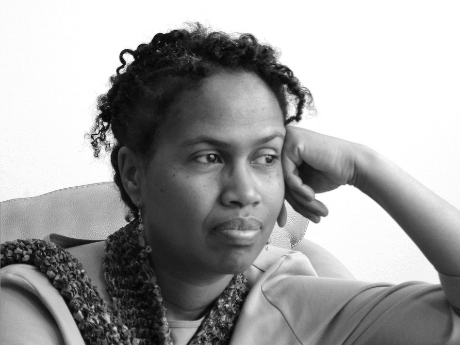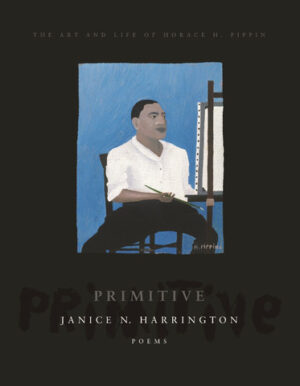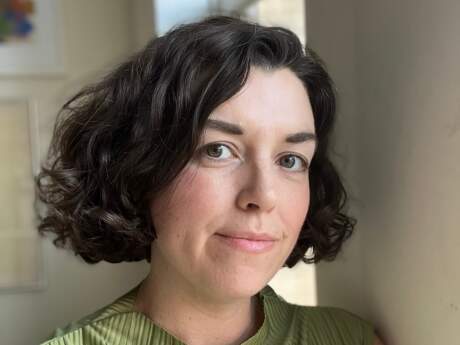In Their Own Words
Janice N. Harrington on “Newly Discovered Portrait of America's First Black President by Horace H. Pippin (1888-1946)”

Newly Discovered Portrait of America's First Black President by Horace H. Pippin (1888-1946)
Distorted, of course, but discernible: the thin red-brown lips
pressed firm, the mole rising beside his nose, the yellow-brown
skin and bituminous eyes bright, afire under a smooth brow,
and the silvering crinkle of grey-black hair, the slender face.
In the background, the white columns of the South Portico,
the green lawn, the green leaf-burdened trees on either side,
a seam of red roses, each one a curl of paint, and beneath
the eaves of an oak (like Hicks's Peaceable Kingdom)
black soldiers in puttees and Adrian helmets lofting
Old Glory and holding French Berthiers, while away from them,
under the portico, behind a pulpit, a black preacher lifts
his hands as if to mop a brow or beseech, and smaller still
and almost hidden under the limbs of a magnolia, four little
brown girls in Sunday dresses, each carrying a white rose.
Each figure on the same flat plane, no depth, no distinction, no
vanishing point, no linear perspective. Enter like history,
anywhere. One easily imagines his brush lifted,
right hand cupped in the left, struggling to get every detail—
supposed and then composed—flags, the diamonded tie,
dignity, pride, solemnity. The four little girls do not look
at one another. The preacher addresses a crowd no one sees.
The soldiers peer outward into a far distance. Only
the key figure stares outward and refuses to deflect our regard.
Unsigned, but as you can see, surely his work,
the exacting brushstrokes, the elegant composition,
the way the image reaches beyond the canvas, rising, lifted up.
We expect vigorous bidding for this unknown work, well-preserved,
prophetic with a primitive's engaging simplicity—certainly
the jewel of any collection, a sound investment, sure to appreciate in value.
From Primitive (BOA Editions, 2016). All rights reserved. Reprinted with the permission of the author.
On "Newly Discovered Portrait of America's First Black President by Horace H. Pippin (1888-1946)"
"Pippins Pop Up All Over—and Some Are Genuine" reads an internet headline. In "Newly Discovered Portrait of America's First Black President by Horace H. Pippin (1888-1946)," I imagine the discovery of a new painting by Pippin, one clearly forged: a portrait of President Barack Obama. Using Pippin's celebrated Holy Mountain series as a reference point, three paintings in which Pippin imbeds minute images that critique the world wars, the lynching of African Americans, and the war's toll on human lives, I imagine what Pippin might have painted in the background of an imaginary portrait of President Obama.
The poem asks readers to imagine that Pippin painted references to the 369th Infantry of World War I (Pippin fought in Company K of the 369th), Martin Luther King, and the 1963 Birmingham bombing that killed four Black girls. Pippin died in 1946. He did not live to see any of these events. But just as he uses his backgrounds in the Holy Mountain paintings to comment on social history, the poem comments on how the generation that elected Barack Obama owes a debt to the Black soldiers of World War I and to the Civil Rights movement.
The poem also asks readers to think about forgeries. The imagined painting is a forgery, and in some sense so is the poem. Or is it? Hasn't the poem painted a word picture of magic realism? What value should we place on artistic imagination? The poem doesn't answer those questions, but it critiques those who look at works of art only for economic value or as consumer objects. If we reduce art to its rate of appreciation, isn't that reduction also a deception, a forgery? I like that in Holy Mountain Pippin makes his viewers study the background to think about the back stories that gird the present. I hope that my painting in words might take up a similar challenge.



